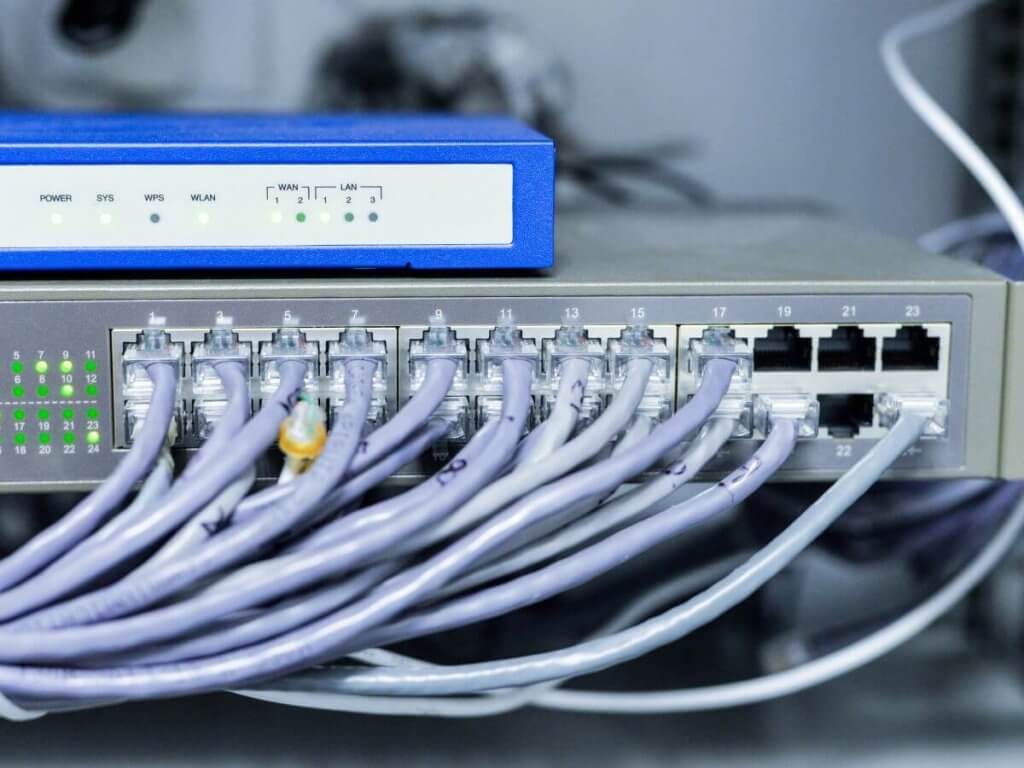In Malaysia, cybersecurity is still a significant concern. Due to a lack of adequate cybersecurity safeguards, many organizations are susceptible to cyber threats, including malware, phishing attacks, and ransomware.
Malaysia has seen many cyberattacks just in the last year. These include a payment gateway data breach and the theft of 22.5 million people’s personal information from a national registration.
Read more: Cyber Crime in Malaysia.
Most recently, a group of hackers infiltrated a system for payslips and stole roughly two million payslips and tax forms, totaling 188.75 gigabytes of information. As a result of these worrying real-world incidents, many organizations still need to develop robust workplace cybersecurity that safeguards the data of both employers and employees.
What Is Unified Threat Management?

A system of information security known as Unified Threat Management (UTM) offers a single point of defense against threats such as viruses, worms, spyware, other malware, and network attacks.
It makes it simpler for administrators to administer networks by combining security, performance, administration, and compliance features into a single installation.
A UTM system, unlike antivirus software, guards more than only servers and personal computers (PCs). They scan all network traffic, screen out potentially harmful information, prevent intrusions and safeguard an entire network and individual users.
Small and Medium-sized Enterprises (SMEs) have embraced UTM systems in large numbers because they find it simpler to manage their information security with a single system than with multiple smaller ones.
According to Verified Market Research, the UTM market is anticipated to reach $11.17 billion by 2026, increasing at a Compound Annual Growth Rate or CAGR of 13.41%, making it the most significant and fastest-growing market.
Essential Characteristics of a Unified Threat Management Solutions
The same six features are included in almost all unified threat management applications. To entice particular users, some programs could additionally have auxiliary functions.
Antispam services and spam filters examine incoming and outgoing email traffic for indicators of potential attacks to stop or identify incoming email-based assaults. Antispam systems employ algorithms to find spam by looking for spam-related trends in the message content.
Using a technique analysis, some systems seek individual words, others for specific linguistic patterns, and yet others for complete word patterns. The message’s contents are quarantined or marked if they seem to be spam or malicious software.
Uniform Resource Locator (URL) filtering and application control are only a couple of the numerous tasks UTM devices may carry out to safeguard a company’s or other organization’s network.
A UTM device can use application control to add particular programs to an allowlist so they can connect to the internet without having to deal with spam content filtering or other security procedures.
To guarantee that all traffic entering the corporate network is safeguarded, application control is typically paired with a UTM device’s firewall and other functions.
By monitoring incoming and outgoing traffic between various networks, firewall security is a hardware or software-based security device that limits access to a private network. It prevents fraudulent or unauthorized users from accessing data or resources, including file servers, printers, and web servers.
An Intrusion Prevention System or IPS prevents attacks by blocking malicious traffic, whereas an IDS scans the network for indications of a cyberattack.
An Intrusion Detection System or IDS’s objective is to identify unusual behavior so that it may be examined and reported. It can alert an administrator to an intrusion and log the activities for subsequent investigation, but it cannot stop any incoming threats.
On the other hand, an IPS is a category of security technology that can change network traffic to thwart harmful activity. A firewall or IDS that already exists can gain an IPS function.
A VPN’s function is to establish a safe connection between two computers using an open network. This makes it possible for coworkers to share files securely, view information remotely, and use various other services without worrying that someone outside the company would steal their information.
VPNs use encryption when data is sent between public and private networks to prevent unwanted access. This results in a secure connection encrypted inside a tunnel across the public internet.
Web content filtering uses various techniques, such as Internet Protocol (IP) address, port number, or media access control (MAC) address, to limit the information that may enter or leave a network. Networks employ content filtering to restrict undesired material and guard against data loss by filtering outgoing data to stop the transmission of critical information.
Best Practices for UTM Security Solutions

As previously mentioned, Unified Threat Management (UTM) is a security solution that combines multiple security features into a single platform. Best practices for implementing UTM include:
- Conducting a thorough risk assessment to identify potential threats and vulnerabilities.
- Segmenting networks to limit the spread of a security breach.
- Implementing a comprehensive security policy that includes guidelines for user behavior and access controls.
- Regularly updating the UTM software and the signature databases of its included security functions, such as firewall, antivirus, and intrusion prevention.
- Monitoring network traffic and security events in real-time, and having an incident response plan in place to quickly respond to any detected threats.
- Regular testing and validation of UTM configuration and effectiveness, such as penetration testing, vulnerability scanning, and regular penetration testing against the UTM platform.
- Following the principle of ‘defense in depth’, meaning, implementing multiple layers of security, including firewalls, deep packet inspection, intrusion detection and prevention systems, and Security
- Information and Event Management or SIEM tools.
Making sure that all UTM security components are configured and updated properly, also regularly review and update the security policy as per the changing threat landscape - Train your staff to be aware of cybersecurity threats, making them more security conscious.
Implementing these best practices can help organizations to better protect against cyber threats, and achieve a strong and efficient security posture.
UTM (Unified Threat Management) vs Traditional Firewalls
Unified Threat Management (UTM) and traditional firewall are both security solutions, but they have some key differences.
A firewall is a network security system that monitors and controls the incoming and outgoing network traffic based on predetermined security rules. Firewalls can be implemented in hardware, software, or a combination of both. They are typically used to block unauthorized access, prevent malicious activity, and protect the network from external threats.
UTM, considered as Next Generation Firewalls or NGFWs, is a security solution that combines multiple security functions into a single platform. It typically includes a firewall but also includes additional security features such as antivirus, intrusion prevention, VPN, content filtering, and more. UTM systems provide a comprehensive security solution that is designed to protect against multiple types of threats, including viruses, malware, and other forms of cyberattacks.
In summary, a firewall is a single security function that controls network traffic while UTM is a combination of multiple security functions like firewall, antivirus, intrusion prevention, and VPN, which is designed to provide a comprehensive security solution to protect against multiple types of threats.
Future of Cybersecurity in Malaysia and How Organisations Can Prepare Their Security Teams

The future of cybersecurity in Malaysia looks very promising. As the country advances technologically, more organizations will need to invest in IT security solutions to protect their confidential data and networks.
To prepare for this future, organizations must ensure that their security teams are properly trained and equipped with the tools needed to detect and respond to potential threats quickly. This can be achieved by establishing a strong cyber culture, investing in the latest technologies, leveraging advanced analytics, and taking proactive steps toward cyber defense.
With the right measures in place, Malaysia can remain a competitive player in the global cybersecurity landscape for years to come.
At Spectrum Edge, we are proud to be your go-to provider of cybersecurity solutions in Malaysia. Our team is highly knowledgeable and experienced when it comes to providing tailored cybersecurity solutions that can help organizations protect their data, networks, and assets against the ever-evolving threats posed by malicious actors.
We offer leading technology solutions from trusted brands such as Fortinet which boast powerful features such as advanced malware protection, anti-virus protection, intrusion detection, and prevention capabilities, data encryption/decryption services, and much more.
No matter what size organization you have or what budget you require, our team will be able to provide a Fortinet solution that perfectly meets your needs. Contact us today for a free consultation about how Spectrum Edge can help your organization stay safe.